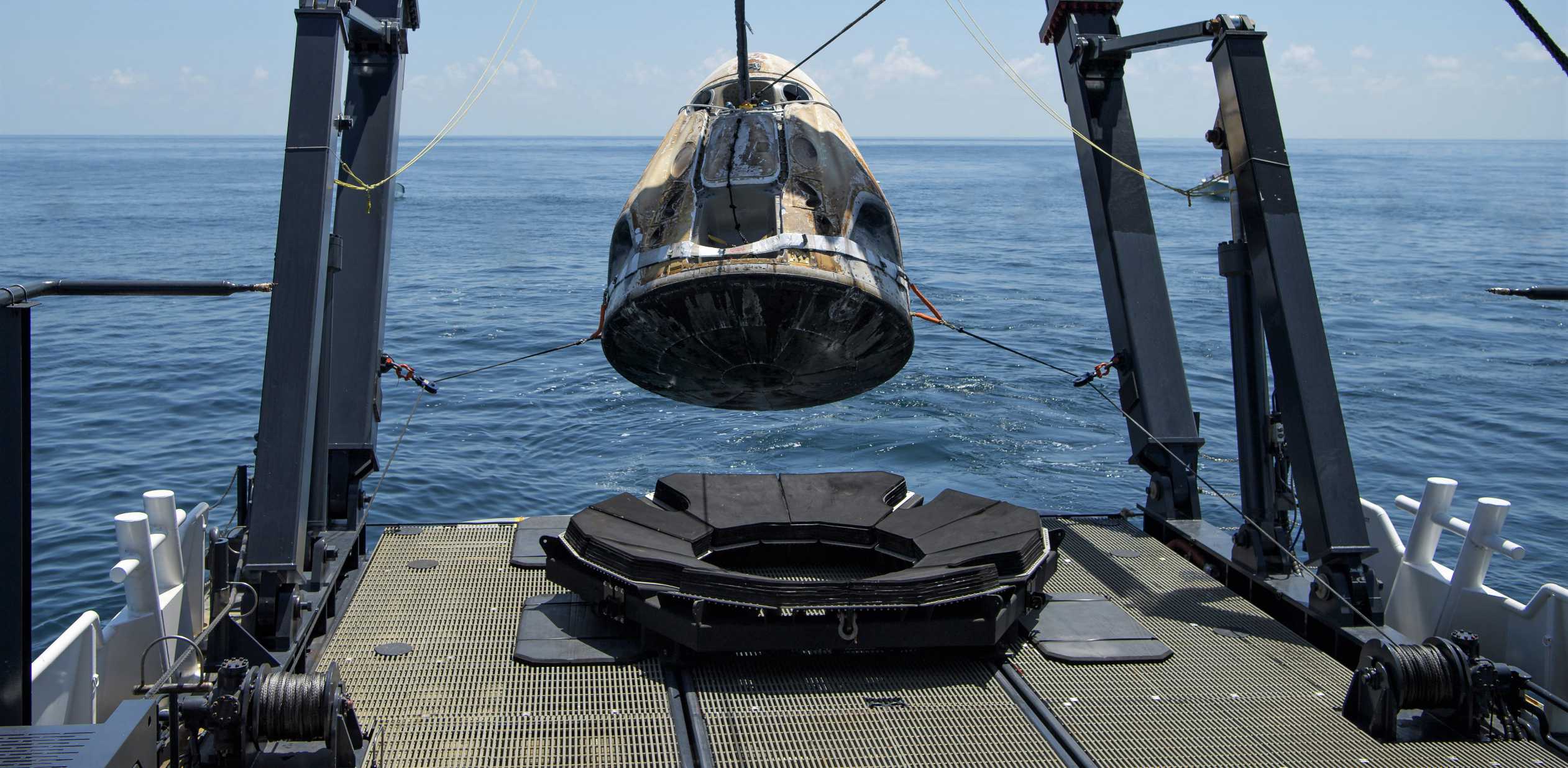
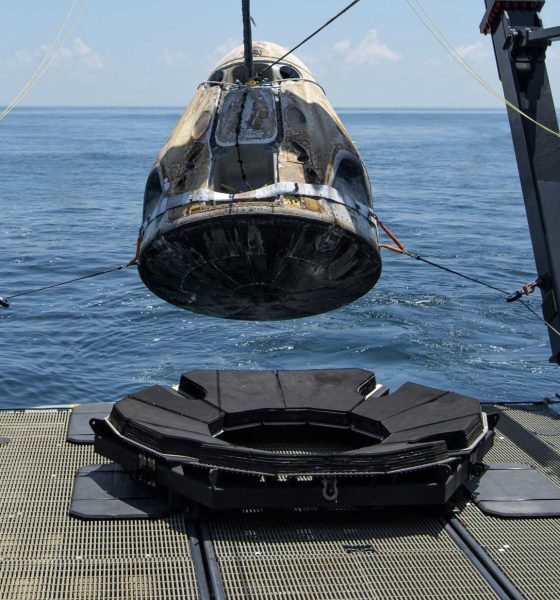
News
SpaceX’s historic Crew Dragon spacecraft returned to dry land for reuse
Five days after becoming the first private spacecraft to successfully launch and land astronauts, as well as the first crewed spacecraft to land in the Gulf of Mexico, SpaceX safely returned historic Demo-2 Crew Dragon to dry land.
After a brief night in a Floridan port on the Gulf of Mexico, SpaceX recovery vessel GO Navigator pushed off, ultimately completing a several-day journey around the entirety of Florida before arriving at Port Canaveral on August 7th. One final lift onto dry land marked the true end of Crew Dragon capsule C206’s Demo-2 NASA astronaut launch debut, although astronauts Bob Behnken and Doug Hurley were technically extracted from the spacecraft and airlifted to NASA’s Houston facilities on August 2nd.
While, prior to Demo-2’s May 30th launch, it appeared that post-astronaut extraction recovery operations would not be of significant interest to NASA, things changed dramatically just a few days later. On June 3rd, a modification to SpaceX’s Commercial Crew contract with NASA revealed that the space agency had unexpectedly given the company permission to reuse Falcon 9 boosters – and Crew Dragon capsules, too – on astronaut launches planned as few as eight months in the future.
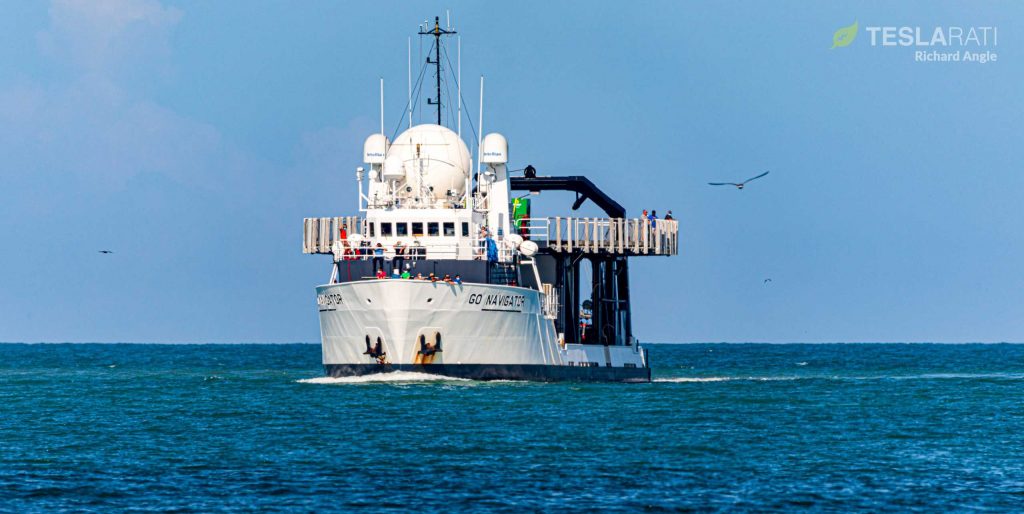
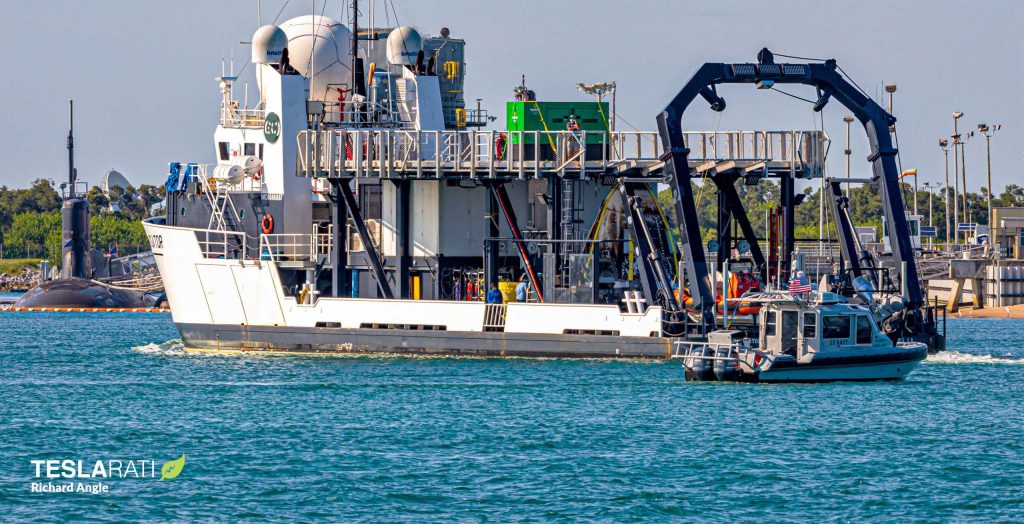
Given just how unexpected NASA’s (quasi) announcement was, many assumed that a clause that SpaceX could begin reusing Falcon 9 and Crew Dragon on Crew-2 (the second operational astronaut launch) meant that NASA would maybe consider the feat in 2021 or 2022. Instead, revealed in detail by both NASA and SpaceX officials over the course of several media events before, during, and after Crew Dragon’s first crewed reentry and splashdown, it quickly became clear that the plan was to reuse the Demo-2 Crew Dragon on Crew-2.
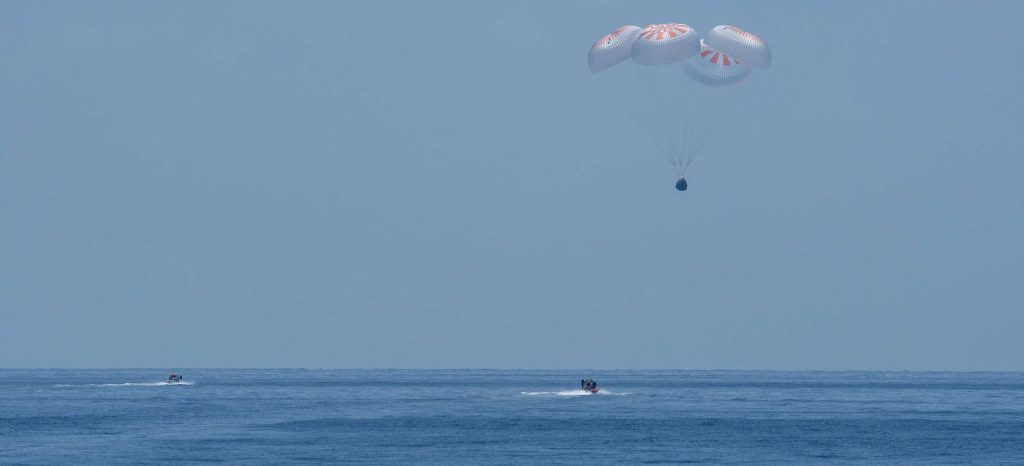
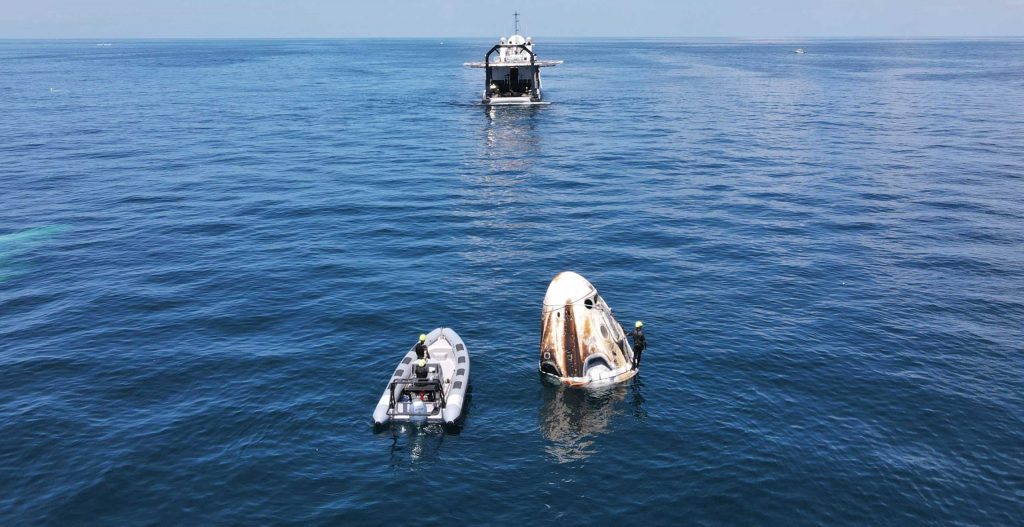
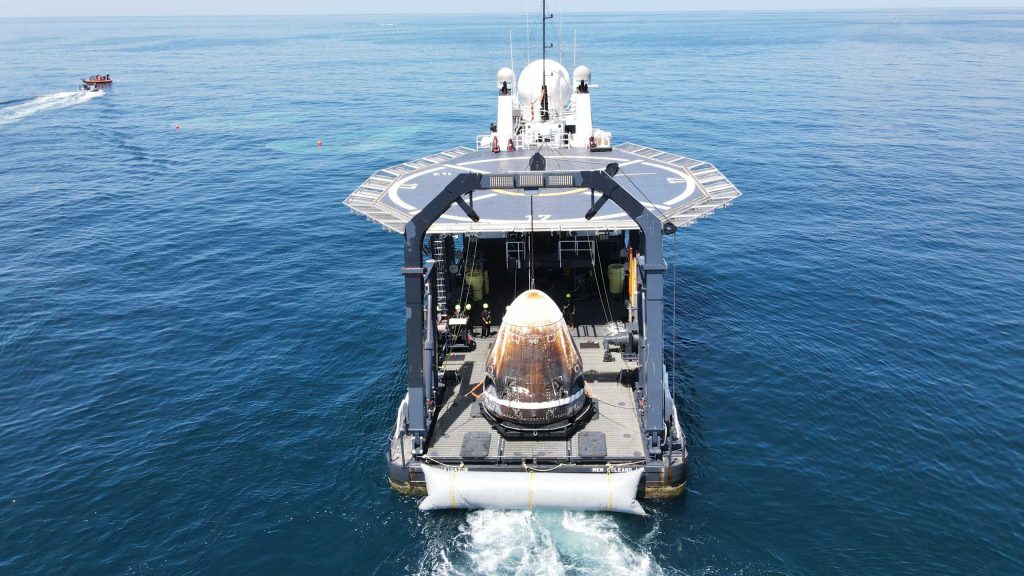
Scheduled as early as February 2021, Crew-2 is shorthand for SpaceX’s second operational astronaut launch to the International Space Station (ISS) and will follow directly in the footsteps of Crew-1, itself scheduled no earlier than (NET) late September. Given that NASA had apparently agreed to reuse the Demo-2 Crew Dragon before it had even returned to Earth (and thus before any inspections could be done), the space agency’s confidence in SpaceX must be at an all-time high.
Knowing NASA, though, that confidence is likely almost entirely based on fact and observations made over a decade of cooperation with SpaceX. With Crew Dragon capsule C206 safely in hand and back on dry land, SpaceX – alongside NASA – can begin an extensive inspection of the historic spacecraft. Building off of experience gained from Crew Dragon’s Demo-1 (C201) and In-Flight Abort (C205) test flights and recoveries, if capsule C206 look as good as SpaceX and NASA seem to think it will be, the inspection process could be a surprisingly short one.
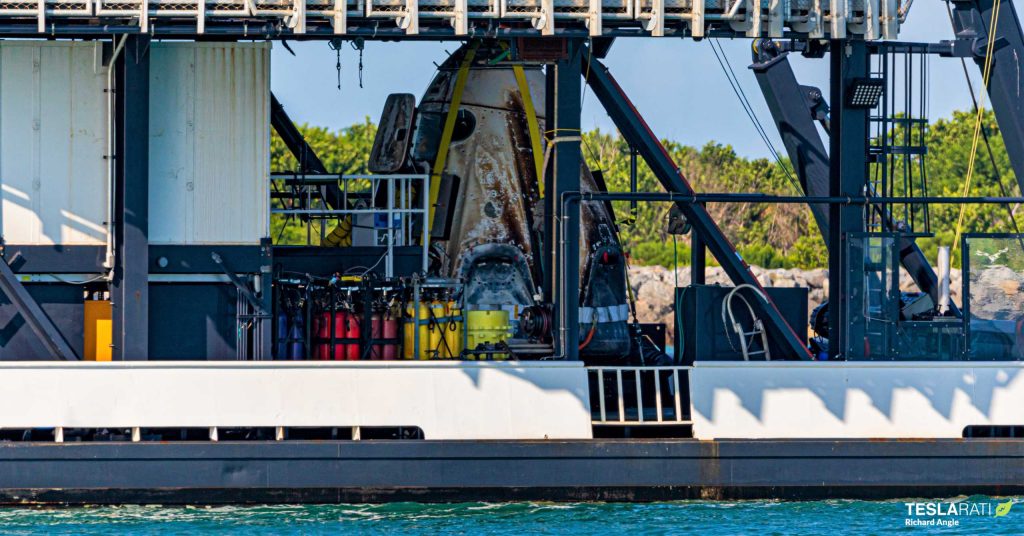
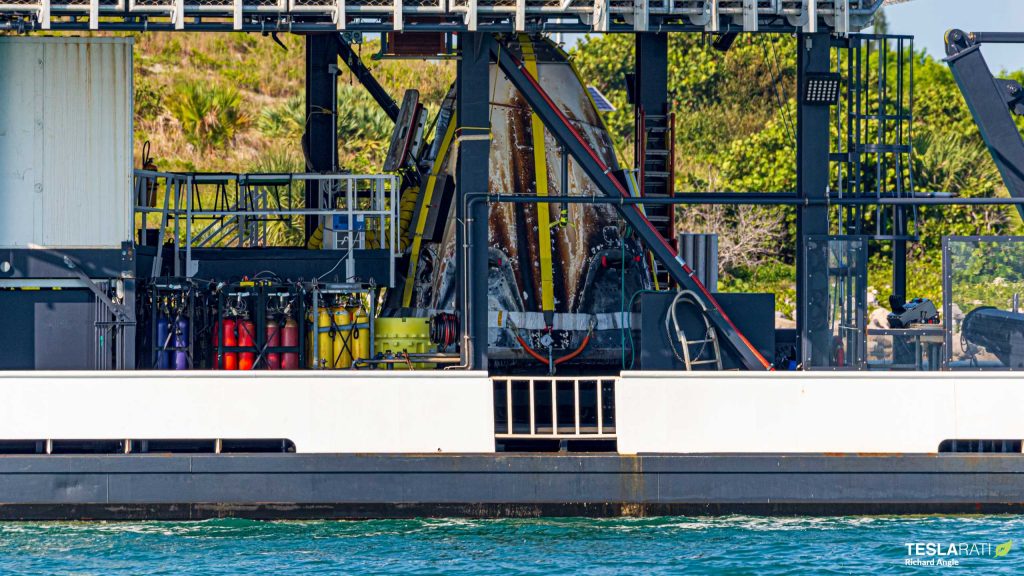

Once NASA officially qualifies Crew Dragon for operational astronaut launches, SpaceX teams will likely begin reassembling capsule C206 as soon as possible, completing any necessary repairs, replacements, or refurbishment along the way. If capsule C201’s processing is anything to go by, SpaceX may choose to perform some major integrated tests – possibly including a Super Draco abort thruster static fire – before giving the spacecraft the go-ahead to become the first reused crew capsule.
According to SpaceX engineer Kate Tice, the Crew Dragon refurbishment process will be quick relative to Cargo Dragon thanks to major design improvements, requiring six months or less between orbital flights. That means that future reuses should leave SpaceX and NASA plenty of schedule margin and Crew Dragon capsule C206 could potentially be ready to launch Crew-2 as early as late 2020.
Check out Teslarati’s Marketplace! We offer Tesla accessories, including for the Tesla Cybertruck and Tesla Model 3.

News
Tesla FSD fleet is nearing 7 billion total miles, including 2.5 billion city miles
As can be seen on Tesla’s official FSD webpage, vehicles equipped with the system have now navigated over 6.99 billion miles.

Tesla’s Full Self-Driving (Supervised) fleet is closing in on almost 7 billion total miles driven, as per data posted by the company on its official FSD webpage.
These figures hint at the massive scale of data fueling Tesla’s rapid FSD improvements, which have been quite notable as of late.
FSD mileage milestones
As can be seen on Tesla’s official FSD webpage, vehicles equipped with the system have now navigated over 6.99 billion miles. Tesla owner and avid FSD tester Whole Mars Catalog also shared a screenshot indicating that from the nearly 7 billion miles traveled by the FSD fleet, more than 2.5 billion miles were driven inside cities.
City miles are particularly valuable for complex urban scenarios like unprotected turns, pedestrian interactions, and traffic lights. This is also the difference-maker for FSD, as only complex solutions, such as Waymo’s self-driving taxis, operate similarly on inner-city streets. And even then, incidents such as the San Francisco blackouts have proven challenging for sensor-rich vehicles like Waymos.
Tesla’s data edge
Tesla has a number of advantages in the autonomous vehicle sector, one of which is the size of its fleet and the number of vehicles training FSD on real-world roads. Tesla’s nearly 7 billion FSD miles then allow the company to roll out updates that make its vehicles behave like they are being driven by experienced drivers, even if they are operating on their own.
So notable are Tesla’s improvements to FSD that NVIDIA Director of Robotics Jim Fan, after experiencing FSD v14, noted that the system is the first AI that passes what he described as a “Physical Turing Test.”
“Despite knowing exactly how robot learning works, I still find it magical watching the steering wheel turn by itself. First it feels surreal, next it becomes routine. Then, like the smartphone, taking it away actively hurts. This is how humanity gets rewired and glued to god-like technologies,” Fan wrote in a post on X.
News
Tesla starts showing how FSD will change lives in Europe
Local officials tested the system on narrow country roads and were impressed by FSD’s smooth, human-like driving, with some calling the service a game-changer for everyday life in areas that are far from urban centers.

Tesla has launched Europe’s first public shuttle service using Full Self-Driving (Supervised) in the rural Eifelkreis Bitburg-Prüm region of Germany, demonstrating how the technology can restore independence and mobility for people who struggle with limited transport options.
Local officials tested the system on narrow country roads and were impressed by FSD’s smooth, human-like driving, with some calling the service a game-changer for everyday life in areas that are far from urban centers.
Officials see real impact on rural residents
Arzfeld Mayor Johannes Kuhl and District Administrator Andreas Kruppert personally tested the Tesla shuttle service. This allowed them to see just how well FSD navigated winding lanes and rural roads confidently. Kruppert said, “Autonomous driving sounds like science fiction to many, but we simply see here that it works totally well in rural regions too.” Kuhl, for his part, also noted that FSD “feels like a very experienced driver.”
The pilot complements the area’s “Citizen Bus” program, which provides on-demand rides for elderly residents who can no longer drive themselves. Tesla Europe shared a video of a demonstration of the service, highlighting how FSD gives people their freedom back, even in places where public transport is not as prevalent.
What the Ministry for Economic Affairs and Transport says
Rhineland-Palatinate’s Minister Daniela Schmitt supported the project, praising the collaboration that made this “first of its kind in Europe” possible. As per the ministry, the rural rollout for the service shows FSD’s potential beyond major cities, and it delivers tangible benefits like grocery runs, doctor visits, and social connections for isolated residents.
“Reliable and flexible mobility is especially vital in rural areas. With the launch of a shuttle service using self-driving vehicles (FSD supervised) by Tesla in the Eifelkreis Bitburg-Prüm, an innovative pilot project is now getting underway that complements local community bus services. It is the first project of its kind in Europe.
“The result is a real gain for rural mobility: greater accessibility, more flexibility and tangible benefits for everyday life. A strong signal for innovation, cooperation and future-oriented mobility beyond urban centers,” the ministry wrote in a LinkedIn post.
News
Tesla China quietly posts Robotaxi-related job listing
Tesla China is currently seeking a Low Voltage Electrical Engineer to work on circuit board design for the company’s autonomous vehicles.

Tesla has posted a new job listing in Shanghai explicitly tied to its Robotaxi program, fueling speculation that the company is preparing to launch its dedicated autonomous ride-hailing service in China.
As noted in the listing, Tesla China is currently seeking a Low Voltage Electrical Engineer to work on circuit board design for the company’s autonomous vehicles.
Robotaxi-specific role
The listing, which was shared on social media platform X by industry watcher @tslaming, suggested that Tesla China is looking to fill the role urgently. The job listing itself specifically mentions that the person hired for the role will be working on the Low Voltage Hardware team, which would design the circuit boards that would serve as the nervous system of the Robotaxi.
Key tasks for the role, as indicated in the job listing, include collaboration with PCB layout, firmware, mechanical, program management, and validation teams, among other responsibilities. The role is based in Shanghai.
China Robotaxi launch
China represents a massive potential market for robotaxis, with its dense urban centers and supportive policies in select cities. Tesla has limited permission to roll out FSD in the country, though despite this, its vehicles have been hailed as among the best in the market when it comes to autonomous features. So far, at least, it appears that China supports Tesla’s FSD and Robotaxi rollout.
This was hinted at in November, when Tesla brought the Cybercab to the 8th China International Import Expo (CIIE) in Shanghai, marking the first time that the autonomous two-seater was brought to the Asia-Pacific region. The vehicle, despite not having a release date in China, received a significant amount of interest among the event’s attendees.








